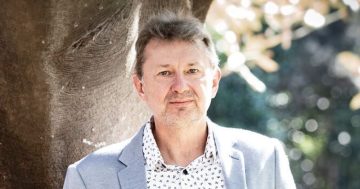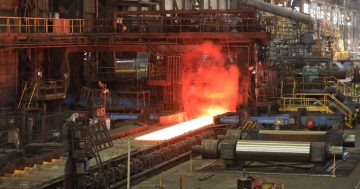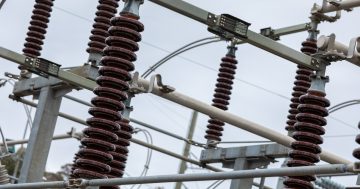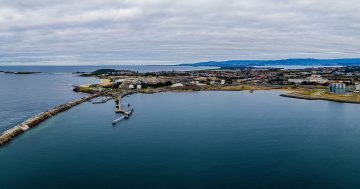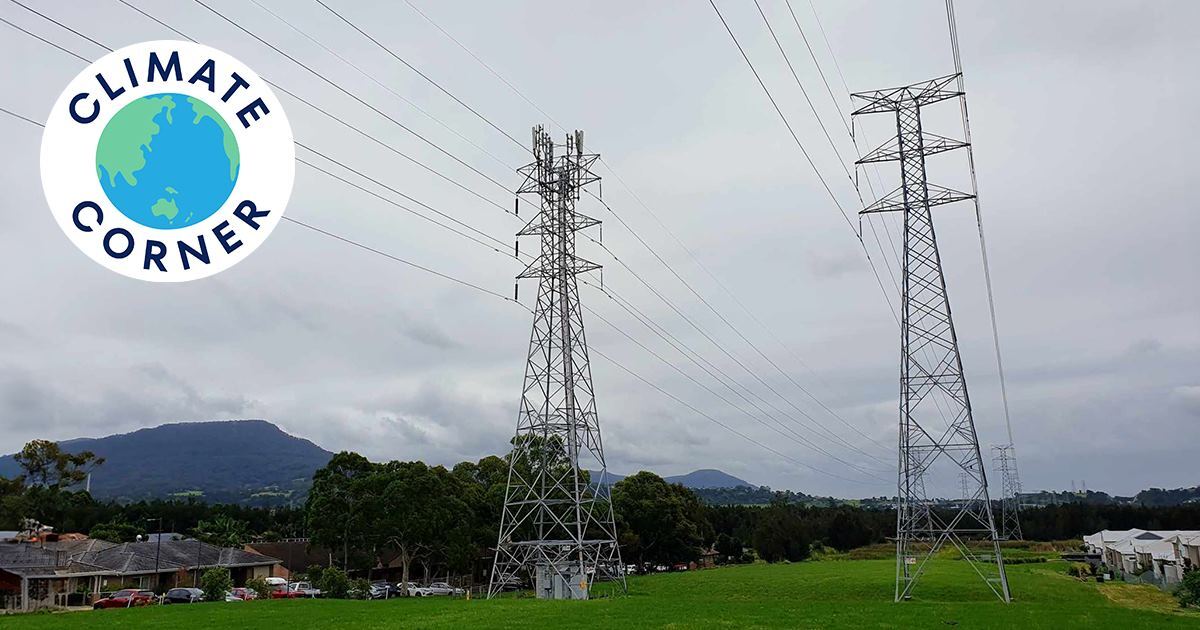
Ever wonder what the heck these big guys do – other than just ”electricity”? Read on. Photo: Zoe Cartwright.
Welcome to the second edition of Climate Corner, where we take a look at the biggest single contributor to Australia’s carbon footprint: electricity production.
It produces a whopping 35 per cent of our total carbon emissions, almost twice as much as the next-biggest emitter, so decarbonising our energy production would make a pretty big dent in our total emissions.
But what would that look like? And how does our energy grid actually work?
Our energy expert from the UOW faculty of engineering, Ty Christopher, is also a licensed electrician and former power systems engineer.
He explained that Australia’s grid was a little confusing.
It was initially designed to cascade electricity out in one direction – from the coal-fired power stations that generate it, it’s transported through the transmission lines you see on enormous steel frames, then sold and distributed into homes.
Because the poles-and-wires infrastructure needed to generate and provide electricity is so massive, it doesn’t exist in a competitive market like many other goods and services we pay for.
Electricity transport is monopolised in Australia, and there is significant legislation designed to deal with that.
The past few decades have seen the biggest changes to our electricity grid since it was established, however, and they didn’t come from any of the multi-billion-dollar companies with a stake in the industry.
They came from millions of individual consumers deciding to install solar panels.
As a result, a system designed to have electricity flow through it in a single direction now has electricity flowing through it in different directions, as solar power generated by homes is fed back into the grid.
It means many of the regulations on the electricity industry are outdated, too.
That’s not all. Our biggest coal-fired power stations are reaching the end of their lives, so we’re going to have to make a significant investment in energy infrastructure within the next decade or so.
Ty said the cheapest and greenest way to do that with our current technology was renewables.
While it doesn’t come without its own set of challenges, renewable energy alone is on target to provide about 80 per cent of our energy needs.
“There’s not a silver-bullet technology to a clean energy future,” Ty said.
“We need a suite of technologies, each playing to their strengths. Home solar won’t do everything, but coupled with localised storage it has the potential to decarbonise our residential lives.
“We need more storage than home batteries alone. Community batteries, big grid batteries and more pumped hydro are all necessary.
“With renewables, we can decarbonise about 80 per cent of the grid, but it will require a massive effort and a different mindset around how we generate and transmit energy.”
The most common alternative to renewables put forward is nuclear power, including small modular reactors (SMRs).
Ty said, simply put, we’ve missed the boat on nuclear.
“If we had started the journey on nuclear three decades ago, we would be in a very different position now,” he said.
“The guidelines from the International Atomic Energy Agency on implementing atomic energy, the timeframe they give, from when a country agrees to have nuclear energy to when the first plant is commissioned, is 15 to 20 years.
“Our coal-fired power stations have about 10 years of life left.”
SMRs are too small – it would take between five and 10 of them to replace each coal-fired power station we have already.
Both options cost significantly more to produce energy. The CSIRO’s GenCost report in December 2023 values nuclear power at $30,000 per kilowatt.
The next most expensive renewable, offshore wind, comes in at $6000 per kilowatt.
The other argument is that there’s better technology coming, so we should hang tight and wait.
“Well, if you don’t replace your car because there will be a newer model next year, you’ll never do it,” Ty said.
“Every day we wait, we’re burning coal and killing the planet.”
We began this column with the promise not just to inform, but to provide a guide to action – and obviously we don’t expect you to get out there and build us a new electrical grid.
Here’s what you can do, whether or not you have cash to splash.
“Show support for organisations that are pushing for reform, like Rewiring Australia,” Ty said.
“If we want a decarbonised electricity grid, we’re going to have to build significant new infrastructure.
“All large infrastructure projects, whether it’s power or roads or sewerage, have a disproportionate effect on the relatively small number of people who live near them, and benefit a much larger number of people.
“If we want a decarbonised grid, we need to reflect on how to offset the inconvenience of the infrastructure so the affected communities experience a net positive outcome too.
“Push hard and expect more from our leaders. Ask why there aren’t more community batteries to trap rooftop solar and share it with less-affluent communities. Why isn’t there a voice for consumers in electricity regulation?
“If you own a home and have a bit of money to spend, it comes back to install solar, insulate well, seal windows and doors, electrify everything including your hot water, and if you can afford it, electrify your transport needs.”










